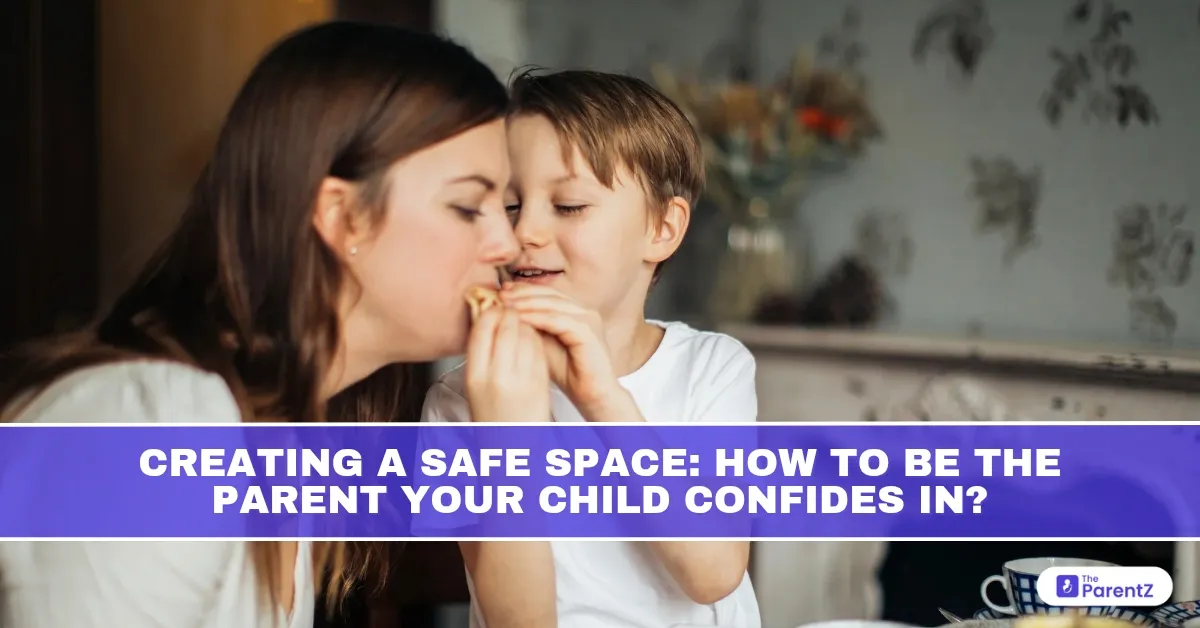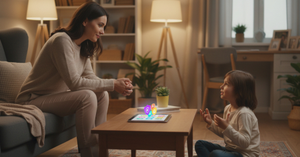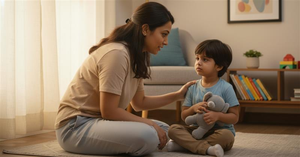"Mom, Dad, can I tell you something?" These simple words can either mark the beginning of a meaningful connection or a missed opportunity, depending on how we respond. In a world where children face increasingly complex challenges—from social media pressures to academic stress—their need for a trusted confidant has never been greater. Yet many of us wonder why our children share so little, often learning about important events in their lives only after the fact.
The truth is that becoming the parent your child naturally turns to isn't about luck or personality—it's about intentionally creating an environment where open communication thrives. So, in this blog, let us explore how we can become the parents our kids feel comfortable opening up to.
The Kid's Eye View: What They Need From Us
Imagine being a kid again, navigating friendships, school, and those big, confusing emotions. What would you want from your parents? Most kids crave:
- A non-judgmental ear: They want to share without fearing lectures or immediate fixes.
- Respect for privacy: They need to know their personal space and thoughts are valued.
- Genuine presence: Not just someone physically there, but someone truly engaged.
- Emotional safety: A space where they can express feelings without being dismissed or ridiculed.
- Trust: Knowing that what they share won't be used against them or broadcasted to the world.
Many children test the waters with smaller issues before sharing bigger concerns. How we handle these initial conversations sets the tone for more significant discussions later on.
The Parents' Perspective: Balancing Support and Guidance
Now, let's put on our parent hats. We want to be there for our kids, but we also worry about them making poor choices, becoming entitled, or not learning from their mistakes. The challenge is to strike a balance between being a confidant and a guide.
- The fear of enabling: We don't want to solve every problem or shield our kids from every consequence. We want them to develop resilience and learn to navigate the world on their own.
- The need to protect: Our protective instincts kick in, especially when we see our kids hurting. It's hard to resist the urge to jump in and fix things.
- The desire to impart wisdom: We've been there, done that, and we want to share our experiences to help our kids avoid pitfalls.
Building Bridges: Practical Steps to Creating a Safe Space
So, how do we bridge the gap between what our kids need and what we want to provide? Here are some actionable steps:
- Active Listening: Put down your phone, make eye contact, and truly listen when your child is talking ("So, it sounds like you're feeling frustrated because...").
- Empathy over Advice: Resist the urge to immediately offer solutions. Instead, validate their feelings ("That sounds really tough") before offering advice, and only if they ask for it.
- Respect Privacy: Knock before entering their room, and don't snoop through their belongings or social media. Trust is earned, and respecting their privacy is a big step.
- Ask Open-Ended Questions: Instead of grilling them with yes/no questions, try "How did that make you feel?" or "Tell me more about that."
- Share Your Own Experiences (Carefully): Sharing relatable stories from your own life can help your child feel less alone, but avoid making it all about you.
- Stay Calm: When they share something difficult, resist the urge to panic or overreact. Take a deep breath and respond calmly.
- Keep Secrets (With Exceptions): Assure them that what they share stays between you, unless it involves harm to themselves or others.
The goal isn't to be a friend who simply validates everything, but rather a trusted advisor who can listen without judgment while still providing direction when needed.
This requires distinguishing between moments that call for active listening versus those that require parental intervention. Not every problem needs to be solved, and not every mistake warrants a lecture. Sometimes children simply need to be heard.
Special Considerations for Different Ages
Young Children (Ages 3-8)
Younger children often communicate through play and may not have the vocabulary to express complex emotions. Getting down on their level, using simple language, and helping them name feelings builds essential communication skills.
Tweens (Ages 9-12)
As children approach adolescence, they become more aware of their peers and may be more hesitant to share with parents. Respect their growing independence while maintaining connection through shared activities and casual check-ins.
Teenagers (Ages 13-18)
Teens need parents who can handle difficult topics without overreacting. They're testing their own values and need space to develop their identities. Parents who listen more than they lecture, who respect privacy while remaining involved, and who pick their battles wisely maintain influence during these critical years.
Navigating Tricky Situations: When to Step In
There are times when we need to move from a confidant to an active parent. Here's how to handle those situations:
- Safety First: If your child is in danger (e.g., substance abuse, suicidal thoughts, abuse), seek professional help immediately.
- Address Reckless Behavior: If their actions are consistently harmful or irresponsible, set clear boundaries and consequences.
- Teach Responsibility: Help them understand the impact of their choices and encourage them to take ownership of their actions.
Conclusion
Building a relationship where your child feels safe confiding in you takes time and effort. There will be bumps along the way, and you won't always get it right. But by showing up, listening, and creating a space of trust and understanding, you can become the parent your child turns to in times of need.








Be the first one to comment on this story.